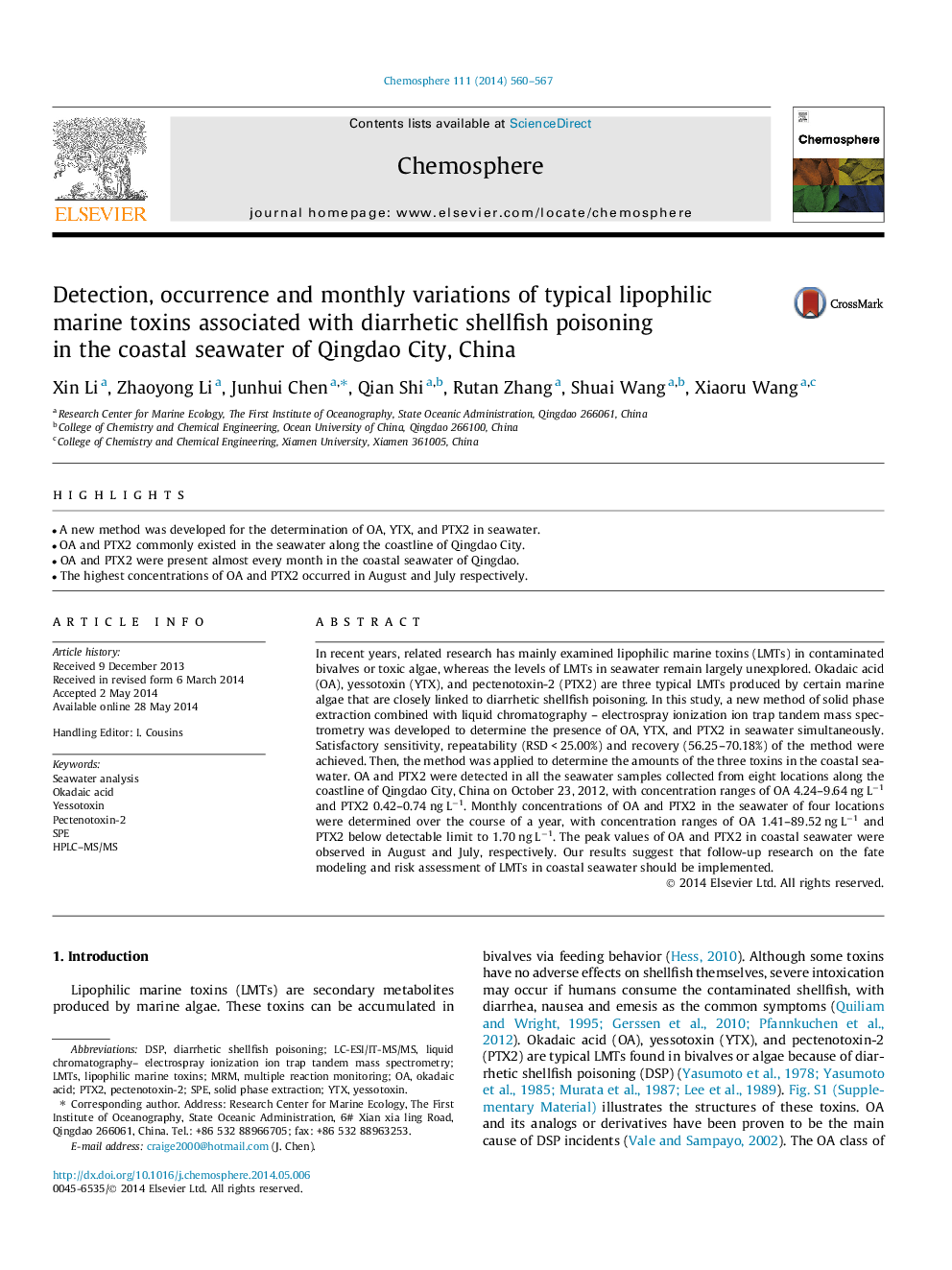| کد مقاله | کد نشریه | سال انتشار | مقاله انگلیسی | نسخه تمام متن |
|---|---|---|---|---|
| 6308727 | 1618860 | 2014 | 8 صفحه PDF | دانلود رایگان |
- A new method was developed for the determination of OA, YTX, and PTX2 in seawater.
- OA and PTX2 commonly existed in the seawater along the coastline of Qingdao City.
- OA and PTX2 were present almost every month in the coastal seawater of Qingdao.
- The highest concentrations of OA and PTX2 occurred in August and July respectively.
In recent years, related research has mainly examined lipophilic marine toxins (LMTs) in contaminated bivalves or toxic algae, whereas the levels of LMTs in seawater remain largely unexplored. Okadaic acid (OA), yessotoxin (YTX), and pectenotoxin-2 (PTX2) are three typical LMTs produced by certain marine algae that are closely linked to diarrhetic shellfish poisoning. In this study, a new method of solid phase extraction combined with liquid chromatography - electrospray ionization ion trap tandem mass spectrometry was developed to determine the presence of OA, YTX, and PTX2 in seawater simultaneously. Satisfactory sensitivity, repeatability (RSD < 25.00%) and recovery (56.25-70.18%) of the method were achieved. Then, the method was applied to determine the amounts of the three toxins in the coastal seawater. OA and PTX2 were detected in all the seawater samples collected from eight locations along the coastline of Qingdao City, China on October 23, 2012, with concentration ranges of OA 4.24-9.64 ng Lâ1 and PTX2 0.42-0.74 ng Lâ1. Monthly concentrations of OA and PTX2 in the seawater of four locations were determined over the course of a year, with concentration ranges of OA 1.41-89.52 ng Lâ1 and PTX2 below detectable limit to 1.70 ng Lâ1. The peak values of OA and PTX2 in coastal seawater were observed in August and July, respectively. Our results suggest that follow-up research on the fate modeling and risk assessment of LMTs in coastal seawater should be implemented.
Journal: Chemosphere - Volume 111, September 2014, Pages 560-567
